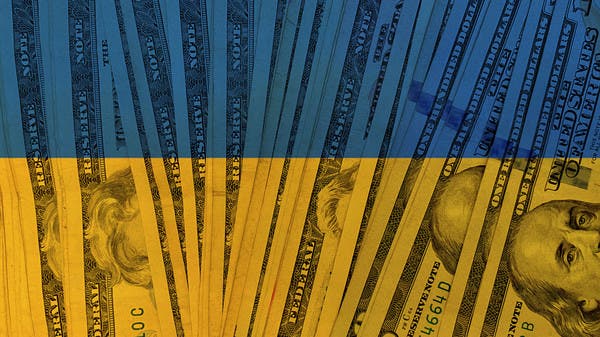Ukrainian national flag on foreground and US one hundred dollars paper currency on background. (Stock photo)
Ukraine’s central bank introduced its largest wartime currency liberalization measures on Friday, with most of the new provisions to take effect on May 4.
A package of liberalization measures had been expected for some time to support business and soften strict restriction on capital outflows and tight foreign exchange controls imposed after Russia invaded Ukraine in February 2022.
The Ukrainian economy shrank by about a third in the first year of the war.
For the latest updates on the Russia-Ukraine war, visit our dedicated page.
Under the new regulations, posted on social media, currency restrictions are to be lifted on imports of goods and services, restrictions on repayments of newly contracted external loans are eased, and restrictions on transferring foreign currency from representative offices to parent companies are eased.
The provisions also allow for business to repatriate “new” dividends, a measure to take effect on May 13.
A central bank statement said the measures were taken with due consideration for the necessary prerequisites.
“Careful analysis confirms that the changes should not create additional risks for macro-financial stability and stability of the foreign exchange market,” it said.
For all the latest headlines follow our Google News channel online or via the app.
The changes, it said, had already been taken into account in updated macroeconomic forecasts, including maintaining international reserves close to the current level of $43 billion to $44 billion.
Ukraine’s economy, bolstered by financial aid from its Western partners, posted 5.3 percent growth last year and is forecast to expand by 3 percent this year.
Read more:
Russia promises ‘devastating revenge’ if Ukraine attacks Crimean Bridge
Russia says its troops captured 547 sq km in Ukraine this year
Analysis: Missile defense wins in Mideast, Ukraine fuel global need to acquire system



